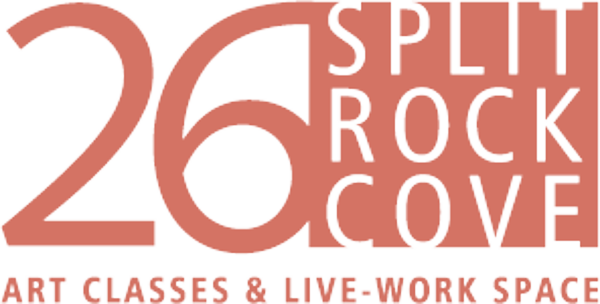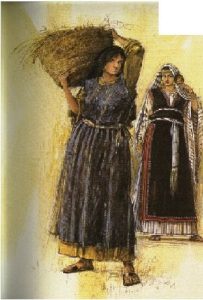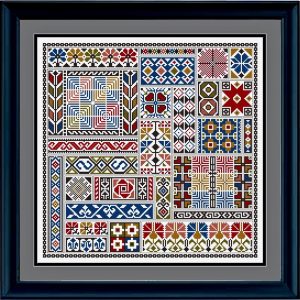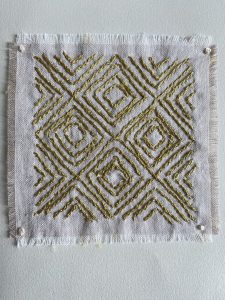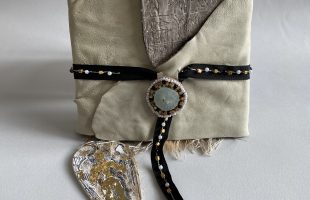
This is the last week of Stories: Women of the Bible in Contemporary Book Arts – an exhibition at the Maine Jewish Museum (MJM). I am one of 5 women represented in this exhibition – all of us having chosen women of the Bible that spoke to us, excited us, reminded us of our lives as women.
Deborah, the Judge and Warrior
The exhibition is diverse, wide-ranging, sometimes serious, sometimes humorous, filled with historical and sociological, and personal explorations of Biblical women whose stories ring true today and offer insights into the experience of all women.
I was honored to be part of this group – Jessyca Broekman, Rebecca Goodale, Jan Owen, Annie Lee-Zimerle, and me. I hope you still have a chance to visit the MJM in Portland, as the exhibition ends Friday afternoon at 4 pm.
But I’d like to talk generally about the women of the Old Testament. From the start I wasn’t convinced that all these women truly existed; there isn’t recorded history about Sarah, or Miriam – major figures in Hebrew history – and their stories were written much later by men. Yet they remain archetypes, examples of the roles of Bibilical women and how should behave. I always bristle at that idea.
I came to believe, however, that even though a woman named Sarah might not have really lived back in 2000 BCE, there were Hebrew women that did. And in fact, I got very curious about all the Semitic tribes of that time, and the historical truth that the Hebrew tribe was committed to move past paganism and towards a monotheistic God.
And so I created the Lost Notebooks: Sarah to Bathsheba, a period of about 1000 years.
I was enamored about the wanderings of Abraham and Sarah, from Syria and Mesopotamia to southern Turkey and down to Canaan. What an interesting life they led as the new religion got underway. I followed them on maps moving about with their tents, their camels and goats – and if not romantic, it was at least a wild and wooly kind of existence. And that interest in the historical, geographical, and political landscape pushed me to know more, particularly about their agriculture, material culture, and the influences of the climate and known technology.
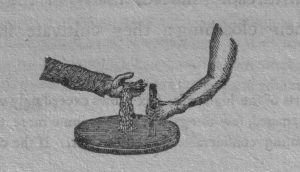 hand quern used for grinding grain
hand quern used for grinding grain
When I think of Miriam, I think of Egypt, and living under Egyptian rule. She (and Moses and Aaron) were true believers of this new religion, for which they fought and suffered. Hebrew Women in 1400 BCE Egypt would have had Egyptian textile influence and knowledge.
And so Miriam’s book is an acknowledgment that the Hebrew women of 1400 BCE were looking at Egyptian designs and techniques like embroidery for their clothing. And though Miriam was considered a prophet alongside of Moses, she was also known to be a musician. I see her as an artist, and surely there were artists within this community.
my embroidery based on Egyptian motifs
I love research. I’ve done it all my life. The questions, the pursuit, the fact checking, the potential answers. Or at least the next questions. Being curious is such a blessing, letting the unfolding facts settle to be further questioned, and ultimately left open with multiple meanings.
This exhibition has given me much to think about. Some new territory to work with in my future artist books. I spun goat hair and wove it, embroidered on rough linen, gathered seeds, ceramic coins from an archeological dig, and gold and carnelian beads. I even found a tent peg for the tent weaver, Jael. It was a very full exploration of materials and time.
